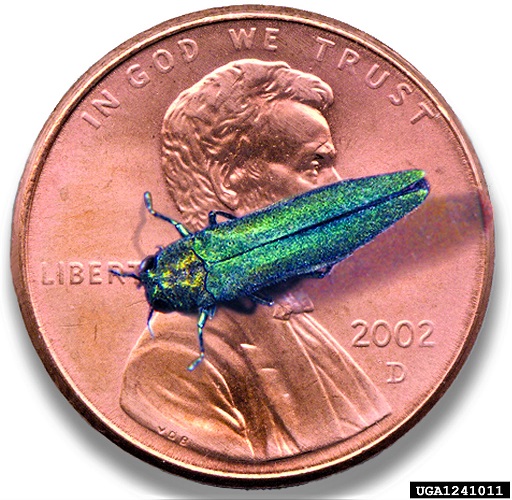Another Tennessee county has been quarantined for Emerald Ash Borer (EAB) after detection of the forest-devastating insect. Lewis County has been added to 62 other counties, which includes Rutherford and all contiguous counties.
The quarantine restricts the movement of firewood, ash nursery stock, ash timber, and other material that can spread EAB. The tree-killing beetle was recently found in Lewis County through the United States Department of Agriculture's EAB detection program.
"When EAB kills an ash tree, that dead tree can be hazardous to people and property," State Forester David Arnold said. "We encourage landowners and communities to inventory their ash trees and develop a plan to minimize potential impact of EAB."
Since being introduced to the U.S. in the 1990s, the destructive insect has killed millions of ash trees and spread to 35 states. Citizens are encouraged to report any symptomatic ash trees to the Tennessee Department of Agriculture (TDA) and follow these guidelines:
- Don't transport firewood, even within the state.
- Use firewood from local sources near where you're going to burn it or purchase certified heat-treated firewood.
- If you have moved firewood, burn all of it before leaving your campsite.
- Watch for signs of infestation in your ash trees. If you suspect your ash tree could be infested with EAB, visit www.tn.gov/agriculture/businesses/plants/plant-pests--diseases-and-quarantines/ag-businesses-eab.html or call TDA's Plant Certification Office at 615-837-5137.
TDA's Division of Forestry estimates that 5 million urban ash trees in Tennessee worth a total of $2 billion are potentially at risk from EAB. There are an estimated 261 million ash trees on Tennessee timberland, with an estimated value of $9 billion.
For more information about EAB and other destructive forest pests in Tennessee, visit www.protecttnforests.org. Follow ProtectTNForests on Facebook, Instagram, and Twitter for updates on the harmful impacts insects and diseases have on our trees, where pests are found, and what landowners can do to help protect their trees.






